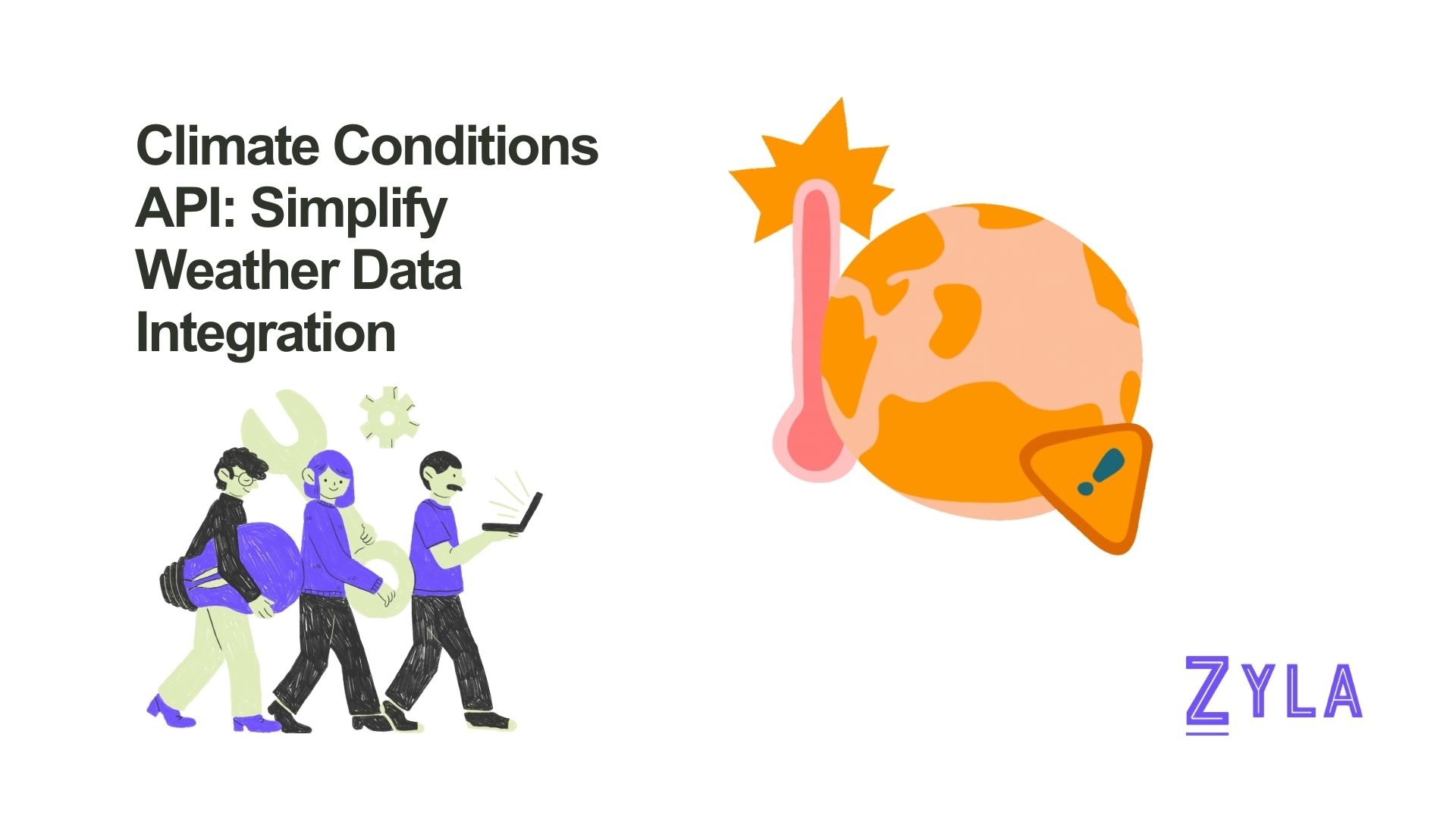Climate Conditions API: Simplify Weather Data Integration

In today's interconnected world, the integration of weather data into applications and systems has become increasingly important for businesses and developers seeking to enhance decision-making processes and user experiences. However, this endeavor is not without its challenges, as the complexity of weather data and the intricacies of integration pose significant obstacles. Fortunately, a Climate Conditions API offers a solution to simplify weather data integration, providing a seamless pathway for accessing and utilizing weather information.
Recognizing the Difficulty of Weather Data Integration Issues Developers and Companies Face
For developers and organizations, integrating weather data into applications poses a variety of issues. The intricacy of weather data integration can be daunting, involving everything from locating trustworthy and accurate data sources to managing a variety of data formats and guaranteeing real-time updates. Moreover, the difficulties in efficiently utilizing meteorological data are exacerbated by the dynamic nature of weather patterns and the requirement for accurate forecasting.
By offering standardized access to meteorological data, a Climate Conditions API acts as a link between applications and weather data providers, streamlining the integration process. With the help of these APIs, developers can easily integrate weather data into their apps and obtain real-time updates, historical data, and forecasting capabilities.
What is a Climate Conditions API? Definition and Purpose
A Climate Conditions API is a specialized application programming interface designed to provide access to weather data and related functionalities. These APIs serve as intermediaries, allowing developers to retrieve weather information programmatically and integrate it into their applications with ease. The primary purpose of APIs is to simplify the process of accessing and utilizing weather data, thereby enabling developers to enhance the functionality and value of their applications.
These APIs simplify the data acquisition process by combining meteorological data from different sources into a single API, saving developers the trouble of integrating multiple data sources separately. As a result, maintaining many data streams becomes less complicated and the development process is streamlined. For a wide range of businesses to make well-informed decisions, fast and reliable weather information is crucial. These tools give developers and companies access to dependable meteorological data so they may make data-driven decisions based on present and predicted weather.
Zyla API Hub
Zyla was established due to the realization that developers face similar difficulties when integrating different APIs into their apps. They want to remove these obstacles by creating an API hub that offers a single account, API key, and SDK. Zyla made the decision to open up its center to the public to aid developers by publicizing the available APIs and expediting the release of new ones.
1) To start testing, choose the API from your dashboard. To access the API's own homepage, just click on its name. All of the API's documentation, endpoints, and usage guidelines are available on this page.
2) Activating an API subscription is the first step towards conducting tests. Take advantage of every single seven-day free trial that is provided. It's crucial to remember that there will only be one hub API available during the trial period. There is a test method in every hub API. There is a testing area on the API page. Select "Test Endpoint" from this menu, then change the parameters as needed.
3) Visit the website to view the test results. You can evaluate the usability and usefulness of the API solution for your project by finding out more. Remember that you are losing some of your subscription each time you use an API request for testing.





